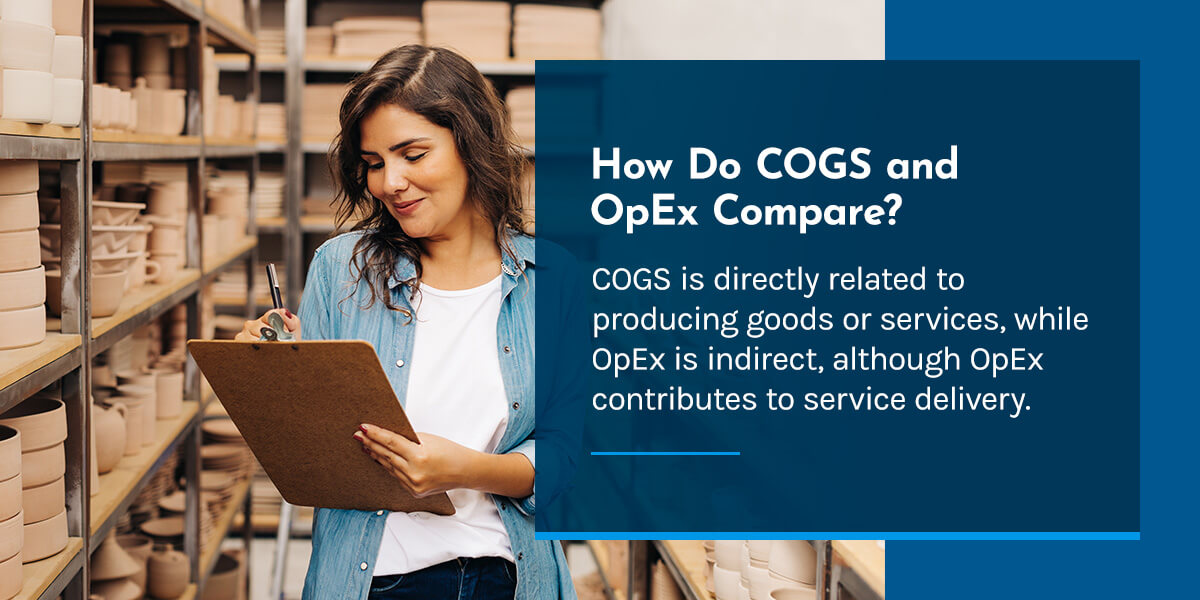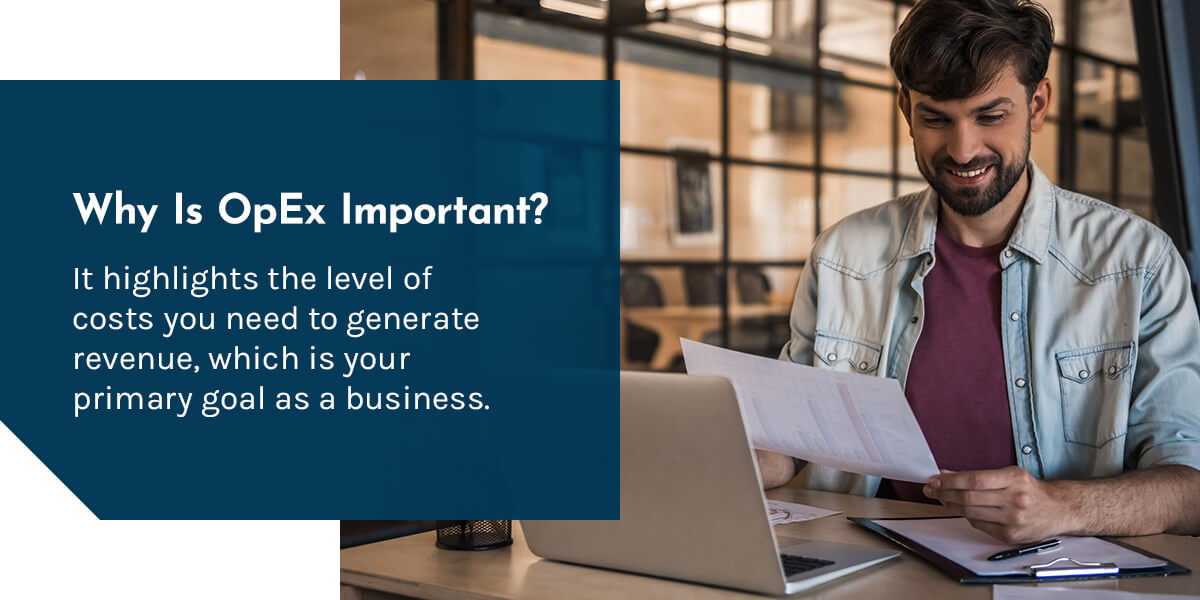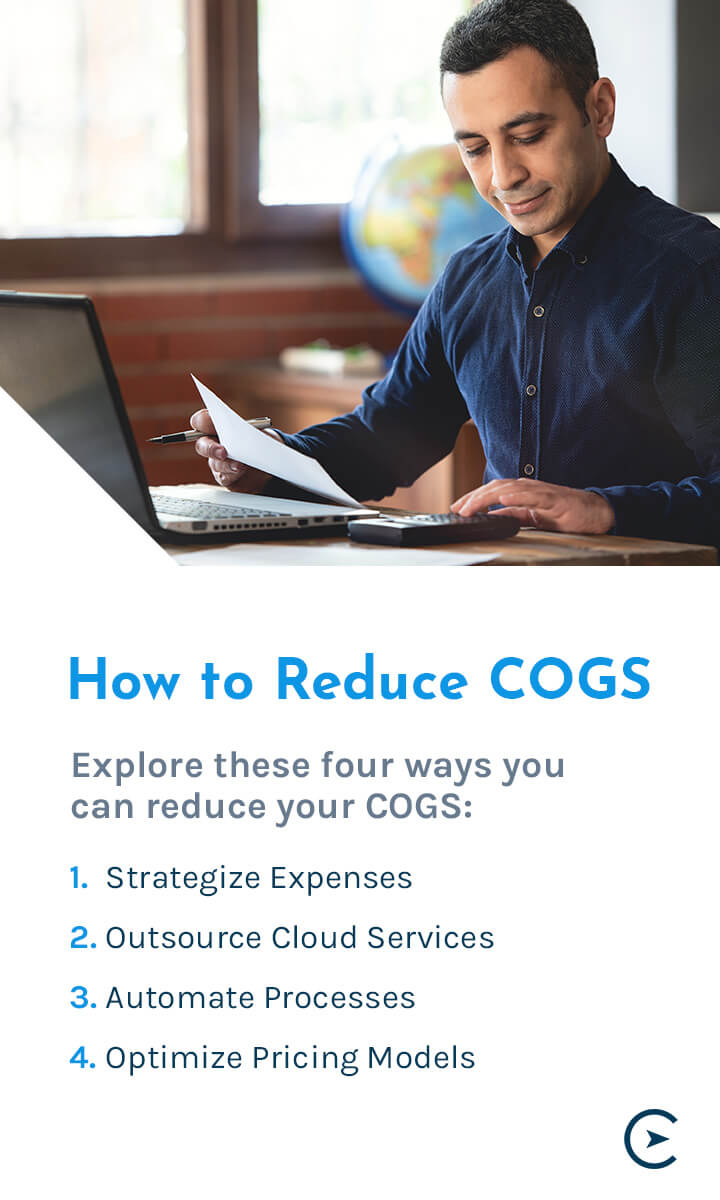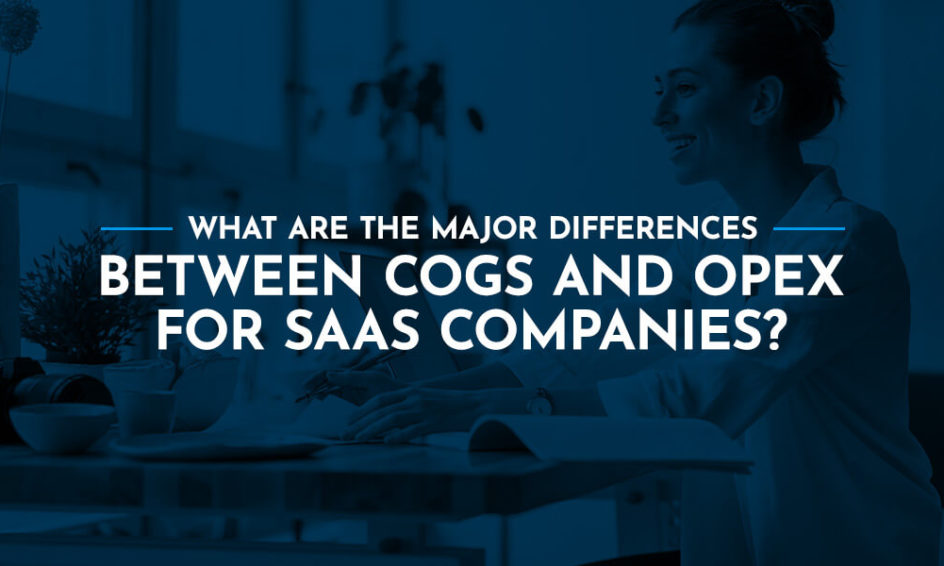The cost of goods sold (COGS) and operating expenses (OpEx) metrics are vital to your SaaS business’s financial statements. Although both relate to expenditure, each has unique characteristics and purposes. First, the items included in computing COGS differ from those for OpEx. Second, the methods of calculating COGS and OpEx are different.
Regardless of their differences, understanding these two concepts can help you drive growth. Knowing the cost of goods sold can help you understand the SaaS gross margin, which enables you to price strategically to stay competitive without hurting your finances.
Also, the information you derive from computing OpEx enables you to examine the efficiency of your indirect expense in generating revenue. For investors, gross margin helps gauge the quality of a company’s revenue, and hence, valuation.
This guide discusses the vital details regarding COGS and OpEx for SaaS companies, including what they are, why they are important, the methods for calculating each and how to drive growth by reducing expenses.
What Is COGS?
The cost of goods sold, also referred to as the “cost of sales,” is the direct expenses incurred on the production of goods or services, including the cost and transportation of raw materials, the cost of labor and storage fees.
For SaaS companies, the COGS structure may include technical support, professional services, dev ops and customer success. Examples of common expenses are application hosting and monitoring costs, software license fees, and website development and support costs. An ideal SaaS COGS may be between 10%-40%.
COGS excludes indirect costs like sales, marketing and distribution costs. For SaaS companies, the exclusions may extend to costs incurred in areas like product management, sales commissions and office expenses. From an accounting perspective, COGS is neither an asset nor a liability. It’s recorded as an expense on the income statement.
Overall, understanding COGS helps you create a proper profit and loss statement, which you can use to calculate SaaS metrics. It also helps you understand your overall SaaS gross margin. Gross margin is the amount your business makes after COGS.
What Is OpEx?
OpEx includes the indirect expenses a business incurs through its day-to-day operations, including rent, utilities, marketing, equipment, repairs, insurance, research and development, indirect labor costs, and general administrative or overhead costs. You incur operating costs as part of the overall business expenses, not just the software-enabled service you provide.
For SaaS companies, the key metrics to track include customer lifetime value, customer acquisition cost, monthly recurring revenue and annual recurring revenue. Although these expenses aren’t directly tied to the product or service generating the revenue, they’re essential to the company’s core operations.
Most expenses classified under OpEx are fixed and remain relatively constant regardless of the production performance. For example, once rent is agreed between the property owner and the business, the amount remains the same even when production or sales increase. Other operating expenses are variable and could rise as the production level increases.
Operating expenses differ from non-operating expenses. While operating costs fund everyday business activities, non-operating expenditures are unrelated to the primary business operations. Examples of non-operating expenses are derivatives, law settlements, unusable inventory charges, restructuring costs and losses. Again, while operating expenses are mostly recurring, non-operating expenses are uncommon.
How Do COGS and OpEx Compare?

COGS and OpEx are both expenses but are spent on different things. COGS is directly related to producing goods or services, while OpEx is indirect, although OpEx contributes to service delivery. OpEx is best described as the costs of selling, general and administrative expenses (SG&A). COGS and OpEx are present on income statements, but OpEx appears immediately below the COGS line item. Finally, they’re calculated differently.
What Are the Benefits of Categorizing Expenses?
Here are three reasons why it’s essential to categorize expenses:
- Simplifies budgeting: Categorizing your expenses refines your SaaS company’s expense reports, providing a clear insight into spending and return on investment. This information can assist finance teams in setting budgets and optimizing resource allocation.
- Simplifies assessment of spending habits: Categorizing your expenses makes it easy to analyze employee spending activities. It gives you a good idea of how various departments manage costs. You can determine which projects are overspent and which resources are underutilized.
- Recognize tax deductions: Several expenses, like loans, rent payments, insurance costs and travel costs, are tax deductible in different capacities. Categorizing your expenses helps you account for all the costs you can file to reduce your tax liability.
Why Is COGS Important?
Fundamentally, COGS helps SaaS businesses calculate the gross margin. With that information, you can estimate how much revenue you have left to finance the other costs, like debts, re-investments and operating expenses.
COGS helps managers and investors understand their business’s financial health. COGS gives you insight into the amount of money you spend to create the service and revenue generated. This provides you with a more accurate picture of your business’s profitability and scalability.
Again, COGS is an essential metric on your financial statement. It’s subtracted from revenue to determine gross profit, which is the profitability measure used to evaluate your business’s efficiency in managing labor and supplies. This information can drive effective decision-making and make estimating your business’s bottom line easy. If you realize an increase in profit after calculating your last quarter’s COGS, you may leverage that information to find solutions in the coming quarters.
Further, the information you derive from calculating your costs of goods sold can help you price products and services strategically. For example, because your net income enables you to understand your profit margin, you can reduce prices to stay competitive without hurting your finances.
Finally, tracking and recording COGS is vital for maintaining an accurate financial record in your books. It’s instrumental in computing your net income and is always included as a line item on financial statements. Saas businesses rely on COGS to estimate their debts and claim deductibles when filing their tax returns.
Why Is OpEx Important?
Like COGS, OpEx helps SaaS businesses understand the gross margin. It highlights the level of costs you need to generate revenue, which is a primary goal of any business.

SaaS companies that incur relatively high OpEx as a percentage of sales compared to their competitors tend to be less efficient at generating those sales. However, because OpEx is an absolute number rather than a ratio, using it as the sole metric to compare with other companies may not be practical. It’s pivotal in horizontal analysis, as it can reflect the company’s current performance in the past.
How Do You Calculate COGS?
COGS relies on the inventory value during an accounting period, which can be calculated by taking the opening inventory, adding purchases during that period and subtracting the closing inventory. For example, if your business has an opening inventory of $10,000, makes purchases of $5,000, and is left with a closing inventory of $3,000, the COGS is $12,000.
However, since SaaS companies don’t have inventory, using the traditional approach can be challenging. So, instead of thinking of it as the typical costs of goods sold, it’s better to categorize expenses as the cost of revenue or sales. You can replace inventory with variables like the cost of licensing, hosting, development and subscriptions.
As an Saas business, you can calculate your cost of sales or revenue by adding up all the purchases associated with the product and deducting them from your revenue to get your gross profit and gross margin. The revenue is the amount earned from the sale of your product or all servicing rendered.
How Do You Calculate OpEx?
Here are two ways to calculate operating expenses:
1. The Standard OpEx Formula
The basic formula most businesses use to calculate OpEx is simply listing all operating expenses within a period and adding them up. For example, assuming your business spent $10,000 on salaries, $2,500 on sales commissions, $6,000 on marketing, $15,000 on supplies, $3,000 on utilities, $4,000 on rent, $500 on property taxes, and $1,000 on furniture, the total operating expenses is $42,000.
2. The Overall OpEx Formula
The overall OpEx formula provides business executives with a broader picture by adding overhead expenses, research and development expenses and the cost of goods sold. Alternatively, you can subtract the operating income and COGS from the total revenue.
How to Reduce COGS
Explore these four ways you can reduce your COGS:

1. Strategize Expenses
Like any other business, SaaS companies aim to generate profits, and an effective way is by increasing sales while reducing expenses. To increase sales, you can create strategic trial periods and use demos to get users interested in your product.
Understandably, with the increase in cloud expenditures, cutting costs can be challenging. COGS are generally necessary expenses, but you can optimize cloud hosting for continuous growth. Consider the following tips:
- Create a cloud cost governance program that balances the company’s goals with prudent fiscal management.
- Integrate cost discussions into regular product delivery processes to make teams aware of the fiscal impacts of their actions.
- Leverage the discounting options and pricing models offered by cloud providers to reduce costs.
- Prioritize cost considerations when making technology decisions for cloud solutions, along with functional and nonfunctional characteristics.
- Remove duplicate or unused applications and subscriptions.
- Proactively educate customers about resource usage and the corresponding costs.
- Assess your software architecture for cloud readiness and identify the right workloads for cloud migration.
- Consistently monitor your SaaS spending.
2. Outsource Cloud Services
Outsourcing certain services can help save on software, hardware, security and maintenance costs. It also allows SaaS companies to focus on their core competencies while experts handle the cloud management. Ultimately, you can streamline internal operations and improve customer satisfaction.
3. Automate Processes
Automating processes within your business is a practical way to reduce direct labor costs. Besides streamlining operations, digital solutions can perform complex tasks more efficiently than manual efforts. Leveraging modern technology also eliminates human error and saves time. Strategic automation enhances productivity, quality and innovation.
4. Optimize Pricing Models
Pricing models can significantly impact your COGS because they determine how much money you generate from each customer. You can align your pricing models with the value proposition, customer segments and the industry’s competitive landscape. Also, you could offer adaptable and flexible pricing models that cater to customers’ changing needs and market conditions.
How to Improve OpEx
Improving your SaaS business’s OpEx can happen with these steps:
1. Normalize Remote Work
Remote work allows you to acquire less expensive talent and reduces overhead costs like utilities, office supplies and rent. You can implement an effective remote or hybrid system that tracks employee performance with digital tools, thereby increasing productivity and efficiency.
2. Save Money on Insurance
To reduce your financial expenditures, examine your benefits package for some cost savings. You want to have competitive employee benefits offerings but with minimum costs. For example, you can look for bundled deals where the coverage applies to multiple offerings. Depending on your needs, shop with different insurance brokers for the best rates and coverage.
3. Resolve Inefficiencies
More often than not, businesses have some form of inefficiency in their operations. These inefficiencies cost money and can impact your operational expenses. Tightening your existing procedures and processes can eliminate errors and risks, such as cyberattacks. While implementing effective protocols can raise operating expenses in the short term, it has many long-term benefits, too.
4. Outsource When Necessary
Some business executives adopt the jack-of-all-trades approach, managing every aspect of their operations and establishing internal departments to perform all tasks. While this may be your preferred management style, it’s crucial to understand that you can’t be a master of all.
In other words, it’s sometimes advisable to outsource some tasks to experts while you focus on what you do best. For example, if you lack experience in accounting and financing, you may outsource those services to professionals who can help you achieve your desired results.
COGS and OpEx FAQs
Do you have further questions about COGS or OpEx? Explore some answers to frequently asked questions below:
1. Does COGS Go Into OpEx?
COGS and OpEx are mutually exclusive. Typically, COGS is listed as a separate line item on an income statement. OpEx usually covers costs excluded from COGS. However, you may include COGS when calculating the overall OpEx.
2. Is COGS the Same as CapEx or OpEx?
COGS is neither a capital expense nor an operating expense. However, an item classified as COGS may be reclassified as a capital expense or operating expense. This happens when it’s an expense for assets that add value to the business or is required to produce or deliver the good or service.
3. Is OpEx the Same as SG&A?
Yes, operating expense is sometimes called selling, general and administrative expense.
Grow Your Business With Compass East
Understanding your cost of goods sold and operating costs can help you understand your Saas business’s financial health, maintain accurate financial records and strategically measure profitability and price products. COGS and OpEx also enable you to assess the efficiency of your stock management and examine your business’s development.
Compass East provides accounting and finance solutions to help drive growth. Through our work, the businesses we partner with experience sound and streamlined financial processes carefully tailored to their needs. Contact us today to learn more about how we can help you reduce your expenses and optimize your resources.

